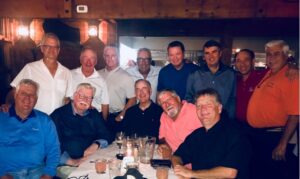An Embarrassing Answer to a Simple Question

“I know this is a strange question,” JW wrote, “but how do you like to spend your weekends? I’m sure it has changed as you’ve gone through different seasons of life. But how did you handle weekends during your biggest wealth-building years? I feel good about my progress during a typical week, but weekends are my Achilles heel. Since my friends and family are off on weekends, I try to spend more time with them. While the time together is great, I also have a sense of guilt. I don’t get much productive work done. I don’t work out like I do during the week. My nutrition habits go out the window. It feels like I take five steps forward during the week and two steps back on the weekend. Do you have any advice for me?”
My weekends. I wish he hadn’t asked that. The answer is embarrassing.
My longtime partner BB worked non-stop during the week, but then devoted his weekends to building barns and reading scripture. His very unbusinesslike weekends seemed to give him the break he needed from writing and working out business problems and allowed him to exercise his body and different parts of his brain. Monday mornings, he always seemed reenergized.
I can’t say for certain that’s true. I never asked him. In any case, I’ve never had that problem.
I shouldn’t say never.
When I was in my twenties, when my family was young and we lived in DC, I adhered to the work-all-week/ have-fun-on-the-weekend idea. I jampacked our weekend calendar with things to do with the kids. That meant walks in the parks, visits to the zoo and the kids’ museums, going to kid-oriented movies, etc. I thought I was working hard and so I deserved to spend my weekends that way. That was then.
In my early thirties, we moved to South Florida and I began my career as a CEO and an entrepreneur. This made a big difference in my weekend schedule. I still loved “playing” on Saturdays and Sundays. But I realized I couldn’t possibly keep up with my work obligations if I didn’t squeeze in some work on the weekends.
In my early forties, I went harder at my work, and probably regularly worked at least six hours each weekend day. There were weekends I’d work straight through. I never saw NOT working as an option. People depended on me. I had things to do.
At 49, I decided I didn’t need to make any more money and made my second effort at retirement. I vowed that, as a first step, I would stop working on weekends. That lasted about a week. I worked harder in my fifties than I did in my forties.
When I turned 60, I tried to retire again and failed again. I continued to work weekends. Probably five or six hours a day.
Now that I’m in my 70s, I’ve really gotten control of myself. I still work on weekends, but I’ve cut the time dramatically so that I can devote as much time as possible to what matters. Which is never work.
I’m down to about four hours per weekend day. So… what do I do for the rest of the day?
Mostly, what I’m “advised” to do.








